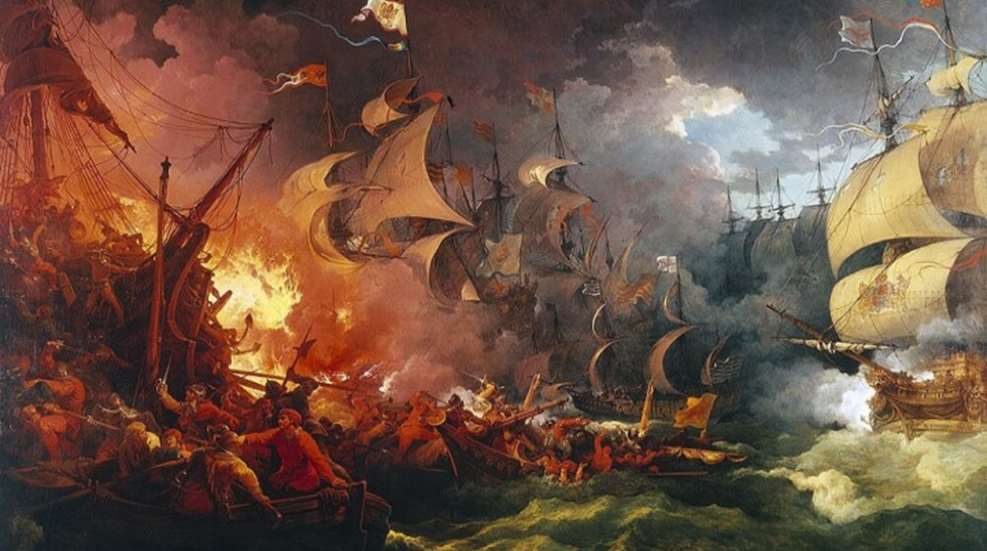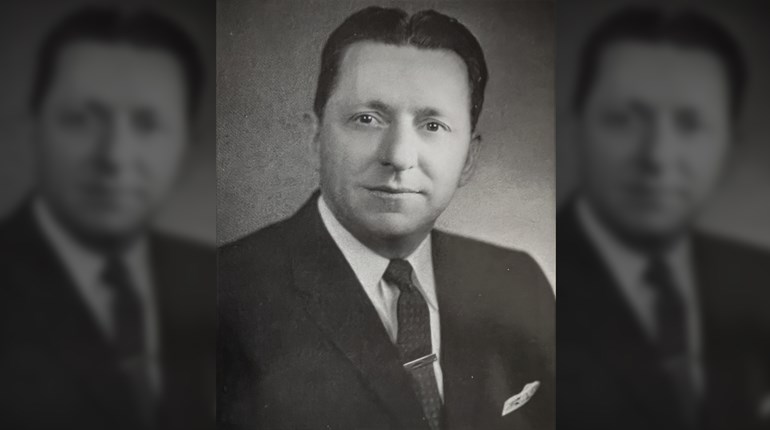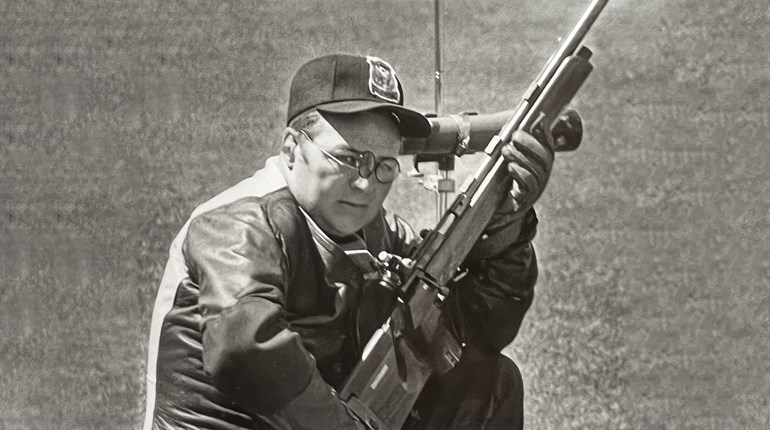
Depending upon one’s point of view, it was either the greatest maritime disaster or greatest military miracle of the 16th Century. Either way, it’s one of history’s most epic sea stories.
In 1588, Spain was the world’s superpower, ruling the oceans with its mighty navy known as the Armada—the armed one. At the time, Spain was also at war with England and planned a major invasion of the British Isles, with tens of thousands of Spanish soldiers to be landed on English shores, transported there by 130 ships. The Armada was so large that it took two full days to set sail from the port of Lisbon.
The Spanish fleet consisted of men-of-war, galleons, converted merchant ships, armed galleys and many smaller craft, resulting in a combined firepower of 2,500 cannons, manned by 8,000 sailors and an invasion force of 18,000 soldiers—a seemingly invincible foe. And to further bolster their numbers, an additional 30,000 soldiers were to be picked up along the way in the Spanish-controlled Netherlands.
The Spanish fleet was first sighted by the Brits on July 19, 1588, and two days later the battle was engaged in the English Channel. The 200 British ships were commanded by rear admiral Sir John Hawkins and his second in command, none other than vice admiral Sir Francis Drake. The two men’s strategy was not to attack the Armada directly, because of its superior firepower, but instead to conduct a hit-and-run campaign of harassment. The Armada had more and larger guns, but in general the English ships were faster, more maneuverable, and there were more of them.
The English also understood that they didn’t necessarily have to destroy the Spanish Armada to succeed, rather, they simply must keep it from landing its soldiers ashore. They also knew that the Spaniards preferred close-quarters sea battles, firing a broadside or two into enemy ships, then boarding and fighting it out hand to hand. As a result, the English ships kept their distance, as far away as possible yet within cannon range, and bombarded the Spanish Fleet. The English ship captains had also been instructed to stay upwind of their enemy as much as possible, a technique known as “gaining the weather gage,” a significant advantage when doing battle during the days of sail because it increased a ship’s maneuverability.
The English fleet gave the Armada no rest even after dark. One night, after the Armada had moved into a tight defensive formation and anchored, the English sent eight large fireships, known as “hellburners,” drifting downwind toward the closely-anchored Spanish. Fireships were unmanned and packed with pitch, brimstone (sulfur), gunpowder, tar, and anything else that would readily burn or explode, the idea being to set fire to the Spanish fleet.
Two of the fireships were intercepted and guided safely away by the Spaniards, but the remaining six, now fully ablaze, kept drifting closer. Panicked, many ships of the Armada cut their mooring cables and scattered, leaving their anchors at the bottom of the sea. It was those very anchors that would be sorely needed in the days to come.
The weeks-long cat-and-mouse game in the English Channel culminated in the Battle of Gravelines on August 8, 1588. Initially staying out of range of the Armada’s heavy guns as they had been doing, the English ships suddenly changed course, closed on their enemy, and began firing broadsides from an upwind position. This meant that the Spanish ships were heeled over against the wind, their undersides exposed to damage below the waterline. The two enemies’ ships were so close to one another at times that the crews on the upper decks were exchanging musket fire. The battle lasted about eight hours, until the English ran low on cannon balls and began pulling back, but not before loading and firing everything they could find to shoot from their cannons, including chains and odd chunks of metal.
The Spanish Armada lost five ships in the battle and finally had had enough; it was ready to cut its losses and set sail for home. But its commander, Admiral Guzman, an accomplished soldier, had limited naval command experience. He decided that rather than fight his way south through the English Channel again—the most direct route home—he would sail north around the British Isles, Scotland and Ireland, and return to Spain in the relative safety of the open ocean. It proved to be a costly miscalculation, as by now it was late summer and the clock was ticking toward autumn and its seasonal gales.
In his book Nature’s Mutiny, published in 2017, author Philipp Blom describes what happened next. “In September, when the fleet reached the open sea west of the Orkney Islands, it was caught in a severe storm; the ships were pressed onto the rocky coast of western Ireland. Having jettisoned their anchors off the English coast, many of them were unable to take refuge in the relative safety of a bay, where they might have waited until the punishing icy gales had passed and the roaring sea was becalmed.”
Blom continues, “The Spanish were excellent sailors, lords of a global empire and used to navigating in different conditions and climate zones. But even they could not have foreseen a storm of this size, completely atypical as it was in those latitudes. Reconstructions of climate data and the log books of the captains indicate that this was a hurricane of a different magnitude entirely than the normal September winds off the Irish coast. It was, in effect, an Arctic storm….”
The result was that 24 more Spanish ships were lost, with 5,000 soldiers and sailors drowned or killed, either directly by the storm or by Irish wreckers and plunderers who had no mercy, deciding it was safer to leave no survivors to tell their story. Of the 130 Spanish ships that initially set out from Spain, only 67 returned, and all were badly damaged, many limping home held together with ropes tied around their hulls to keep them from falling apart, their skeleton crews sick and dying of starvation. Spain’s King Philip II lamented upon seeing what was left of his tattered, destroyed fleet, “I sent my ships against men, not against God’s wind and waves.”
An interesting final sidenote of the extended sea battle between England and the Spanish Armada is that Sir Francis Drake so distinguished himself during the conflict and thereafter that King Phillip II labeled him a pirate and put a price on his head, dead or alive, of 20,000 ducats, today worth about $8 million. No one ever collected the bounty. Drake died of dysentery in 1596.






































